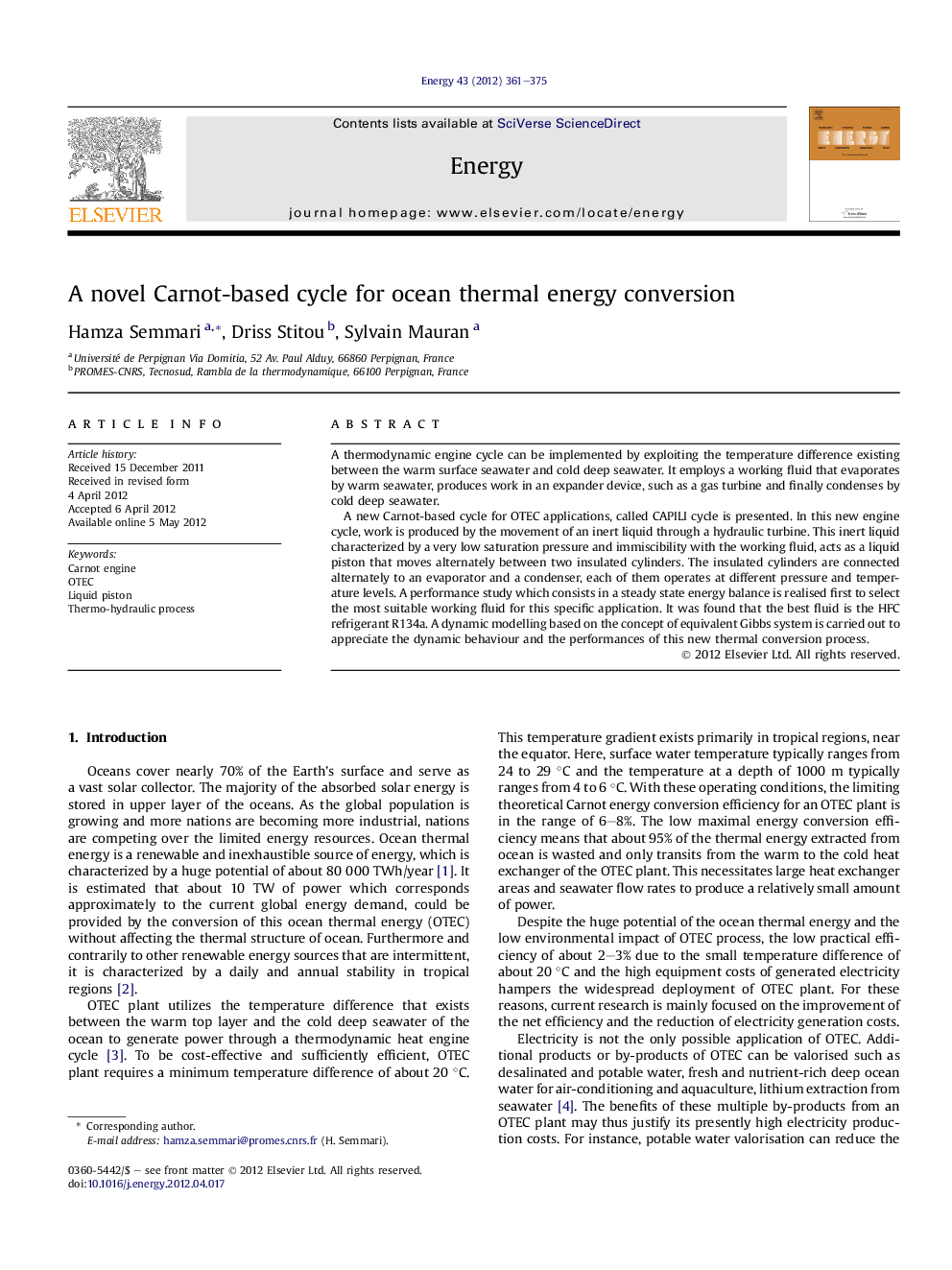| کد مقاله | کد نشریه | سال انتشار | مقاله انگلیسی | نسخه تمام متن |
|---|---|---|---|---|
| 1733778 | 1016145 | 2012 | 15 صفحه PDF | دانلود رایگان |

A thermodynamic engine cycle can be implemented by exploiting the temperature difference existing between the warm surface seawater and cold deep seawater. It employs a working fluid that evaporates by warm seawater, produces work in an expander device, such as a gas turbine and finally condenses by cold deep seawater.A new Carnot-based cycle for OTEC applications, called CAPILI cycle is presented. In this new engine cycle, work is produced by the movement of an inert liquid through a hydraulic turbine. This inert liquid characterized by a very low saturation pressure and immiscibility with the working fluid, acts as a liquid piston that moves alternately between two insulated cylinders. The insulated cylinders are connected alternately to an evaporator and a condenser, each of them operates at different pressure and temperature levels. A performance study which consists in a steady state energy balance is realised first to select the most suitable working fluid for this specific application. It was found that the best fluid is the HFC refrigerant R134a. A dynamic modelling based on the concept of equivalent Gibbs system is carried out to appreciate the dynamic behaviour and the performances of this new thermal conversion process.
► A novel Carnot-based cycle operating with a liquid piston is investigated for OTEC application.
► The most suitable working fluid giving the best performances is found to be the HFC R134a.
► The performances of this new thermal process are evaluated using a dynamic modelling.
► A thermal efficiency of 1.9% can be obtained by exploiting seawater temperature difference of 20 °C.
► A net cycle efficiency of 1.2% is achieved considering a net to gross power production ratio of 61%.
Journal: Energy - Volume 43, Issue 1, July 2012, Pages 361–375